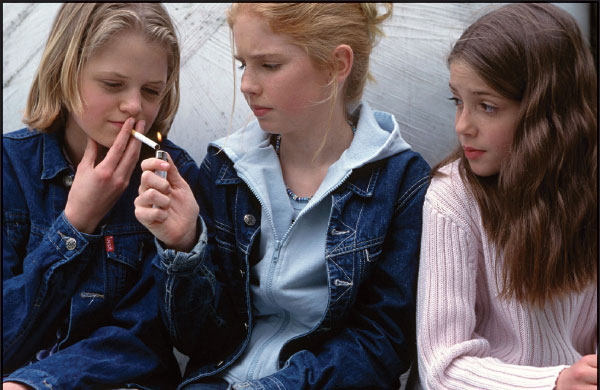 Both optimists and pessimists contribute to our society. The optimist invents the airplane and the pessimist the parachute. This quote by Gil Stern says a lot about the different outlooks people can take on life. But, is it possible to transform yourself from a parachute maker into an airplane inventor? Dr. Martin Seligman, the author of Learned Optimism: How to Change Your Mind and Your Life, believes that the answer is a resounding yes!
Both optimists and pessimists contribute to our society. The optimist invents the airplane and the pessimist the parachute. This quote by Gil Stern says a lot about the different outlooks people can take on life. But, is it possible to transform yourself from a parachute maker into an airplane inventor? Dr. Martin Seligman, the author of Learned Optimism: How to Change Your Mind and Your Life, believes that the answer is a resounding yes!
Optimism vs Pessimism
We all start life as babies, completely dependent on others for even our most basic needs. While babies can cry when they need to be fed, changed, or burped, there is little else they can do to better their circumstances.
To that end, Dr. Seligman explains that we begin life with learned helplessness. In other words, because we cannot control our situation, we grow accustomed to being helpless and therefore do not even attempt to change the situation. The older we become, however, the more control we gain. We learn to communicate, move, and interact with others.
In his book, Dr. Seligman explains that once people have the ability to direct their own actions, they become either pessimists or optimists. The difference between optimism and pessimism manifests itself in the way that unfortunate events are viewed. Optimists believe that bad things are temporary and they are not necessarily at fault for what happened. This often leads to less worrying about the problem because optimists believe that the adversity will only last for a short period of time. They approach a problem with the attitude, This too shall pass. In addition, if they are the cause of a problem, they acknowledge their mistake and vow to change their behavior in the future. Above all, optimists believe that their fate is in their hands and they can work to improve their situation.
Pessimists, on the other hand, drift through life, barely registering the effects of their actions on their own circumstances or the circumstances of others. They believe that nothing they do will change the outcome and therefore choose to do nothing. When taken to an extreme degree, pessimism can result in depression.
What is Learned Optimism?
If you can program yourself to be helpless (like babies and pessimists), you can also learn to be an optimist. Conditioning yourself to respond to situations with optimism is a great idea, as there are tremendous benefits to seeing the world with the cup half full.
Dr. Seligman explains that the key to learned optimism is as easy as ABCDE:
A: Adverse Event or Situation: First, you must learn to identify negative situations that you routinely face. Perhaps you have a family member who is difficult to get along with or you have a demanding child. Recognizing this difficult situation is the first step towards reframing it through the lens of an optimist.
B: Beliefs About that Event: Listen to what your inner monologue says about those events. Do you say, Thats terrible, its going to keep on happening, Theres nothing I can do about it, or I cant believe this is happening to me again! Record these beliefs so that you have an idea of the kind of responses you make to unfortunate events.
C: Consequences of Your Beliefs: Now that you are aware of the negative situations and your beliefs about these situations, see how they make you feel. What kind of emotions do your beliefs elicit? Does thinking, I cant believe this is happening to me again, make you feel like there is nothing you can do to change your situation? Record the feelings that accompany your beliefs.
D: Disputation and Distraction: Once you are aware of the emotional consequences of your inner monologue, dispute those beliefs or distract yourself. Disputation might involve challenging the usefulness of the belief. Ask yourself, Who benefits when I think this way? If the answer is, No one, then that belief is not one worth having. You might also generate specific external explanations for the event. Alternatively, distract yourself from your destructive inner monologue and focus on more positive thoughts.
E: Energize: This one is the easiest stepyou will feel energized after going through steps A-D and will start reacting to situations in a more positive light. Instead of blaming yourself or feeling hopeless to change the world around you, through your changed inner monologue you will start recognizing that the power to change is in your hands.
Pessimism Is Not All Bad
While Seligman points out some tremendous benefits of optimism, he cautions that all optimism, all the time, is not necessarily the correct approach to life. After all, if there were no pessimists, what would happen when the plane crashed? We would not have any parachutes!
Instead, the idea is to maintain a flexible optimism. Pessimism has played a role in survival throughout all of human history. When there are highrisk, negative consequences to an event, it is a good idea to listen to your inner monologue that says, This isnt going to workits too risky! If you view everything with rose colored glasses, you might find yourself in the air with no parachute.
However, when the risk is small, take the optimistic view and make a change. Dont fall into the trap of learned helplessness and let life take you for a ride. Instead, jump in the cockpit and pilot your own actions. After all, at the end of the day, you are the one who will live with the actions you took yesterday and take today and tomorrow.
_________________
An acclaimed educator and education consultant, Mrs. Rifka Schonfeld has served the Jewish community for close to 30 years. She founded and directs the widely acclaimed educational program, SOS, servicing all grade levels in secular as well as Hebrew studies.



